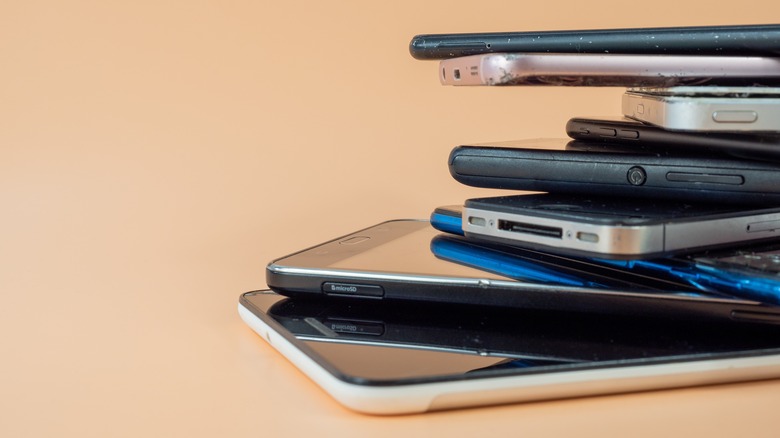Tell-Tale Signs Your Smartphone Needs An Upgrade
Smartphones have become an essential part of our lives, and we rely on them for a wide range of tasks, from staying connected with friends and family to managing our work and personal lives. However, smartphones can quickly become outdated as they age, and sooner or later, there comes a time when an upgrade seems necessary. While smartphone companies want users to upgrade to a smartphone as soon as a newer model arrives in the market — typically within a year — it would be impractical for users to stick to a yearly upgrade cycle. And given the rising prices of smartphones, it is not a financially wise decision either.
Interestingly, most consumers in the U.S. are wise enough not to fall victim to marketing tactics, and the average smartphone user in the country switches to a new device every two and a half years. That said, there will certainly be outliers, like people who cannot help but upgrade to a new phone every year and others who will wait as long as possible to switch to a new phone. If you fall into the category of people who do not mind using old smartphones as long as they continue to work, there will certainly be a time when the phone starts showing signs of its age.
Once you get to that point, these unmistakable signs should serve as the initial indicators that it's time to trade in your aging smartphone for a brand new, shiny replacement. Let us discuss what these aforementioned tell-tale signs really are.
Obvious hints your smartphone is due for an upgrade
While there are several ways in which your aging smartphone will tell you that it's become too old for the kind of tasks you throw at it, the first clearly observable sign is a general feeling of sluggishness. Seemingly simple tasks like opening apps and switching between them become painstakingly slow. Sometimes, these issues can be fixed by a factory reset or the steps mentioned in this article. Still, on phones that have become really old, even these steps may not be enough to make the overall feeling of complete sluggishness disappear.
Another common sign of a rapidly aging smartphone is a sudden drop in battery-holding capacity.
You will notice that the phone's battery doesn't last as long as it used to, and you need to charge it more frequently; in some cases, the battery may rapidly go down while charging the phone. While this process may be slow in the beginning, the speed of degradation may progressively increase over time. On ancient phones, battery degradation may reach a point where the phone becomes unusable, prompting a battery replacement, which is often expensive, especially with iPhones.
Until recently, Android smartphones were infamous for their poor, fragmented software update cycles. While things have improved in recent years, some manufacturers are still unable to keep their promises, particularly regarding update cycles for older phones. It is not uncommon for older phones to receive little to no updates, making them vulnerable to security risks.
Even if you ignore the security aspects (which you shouldn't), the outdated software may even prevent you from using the latest apps, which for many is an immediate sign that it's time to finally replace that aging smartphone.

